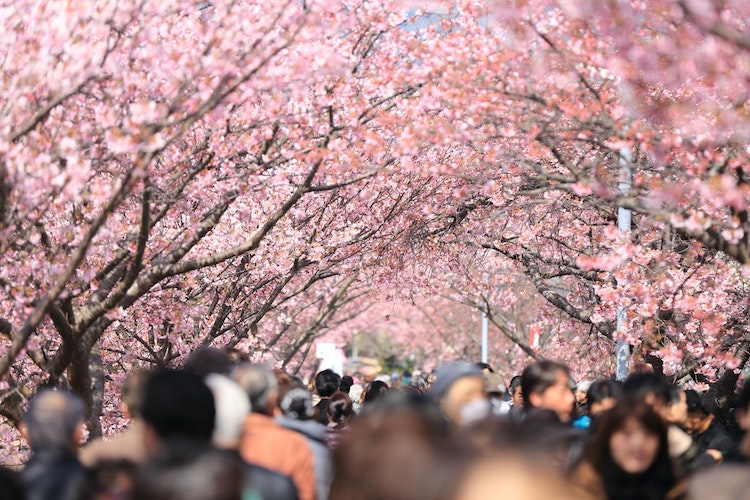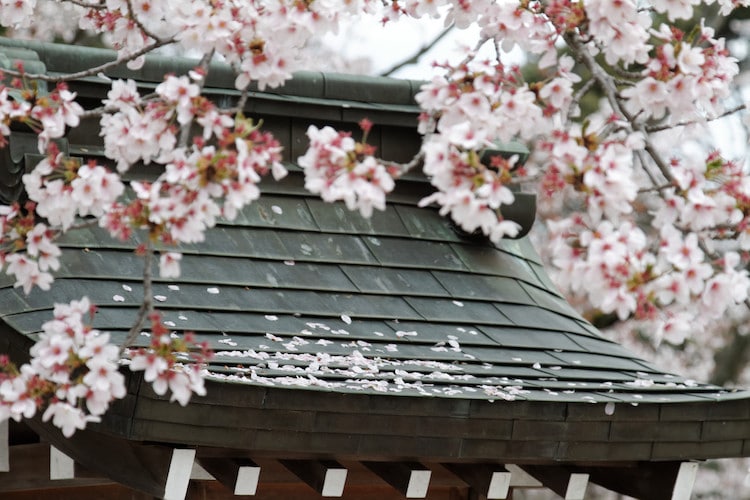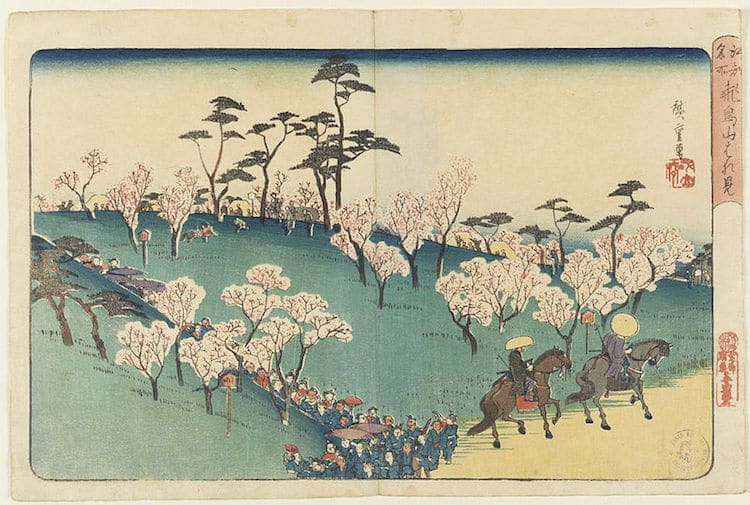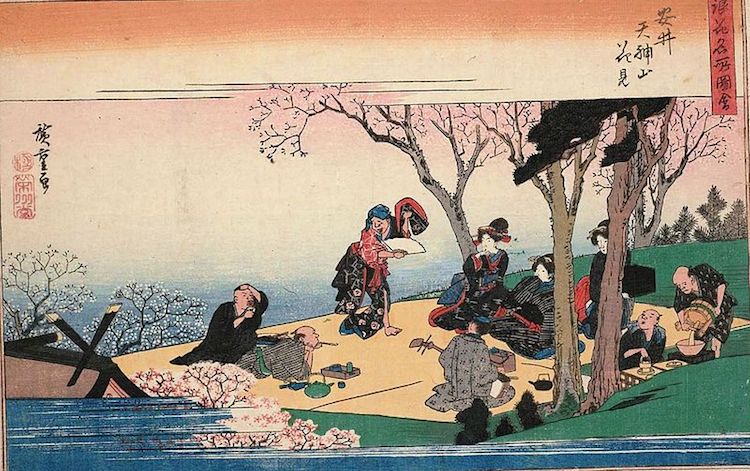
Photo: kazuend via Unsplash Commons Public Domain)
Every year, villages, towns, and cities across Japan warmly welcome spring with waves of cherry blossoms. As one of its national flowers, the cherry blossom— or sakura—holds a special place in Japanese culture.
For centuries, people have flocked to see the flora in full bloom, attending entire festivals dedicated to hanami, or “flower-viewing.” Occurring all over Japan, these festivals attract crowds of flower-loving tourists and locals alike, proving the undying popularity of the Prunus plant.

Hiroshige, ‘Cherry Blossom Time, Yoshiwara Nakanochō’ (ca. 1839-1842) (Photo via Wikimedia Commons Public Domain)
Cherry Blossom Meaning
Why is this flower so significant? In addition to the beauty of its pale pink petals and its prevalence in Japan, the blossom is known for its distinctively short lifespan. Once this tree begins to flower, its delicate blooms will last only for a week or two before the “sakura snow” falls to the ground or is carried off by the breeze. Because of this fleeting phenomenon, the flowers have come to represent life’s ephemerality.

Photo: KimonBerlin via Wikimedia CommonsCC BY-SA 2.0)
Similarly, cherry blossoms represent renewal. Year after year, the pops of pink mark the unofficial end of the bleak winter months and signify the long-awaited start of spring. While unseasonably warm weather can prompt a premature bloom and uncharacteristically cool temperatures can conversely cause a delay, blossoms typically reach their peaks between March and mid-April, making this a prime time for hanami.

Hiroshige, ‘Cherry-Blossom Viewing at Asuka Hill’ (ca. 1830-1843) (Photo: Museo del Prado via Wikimedia Commons Public Domain)
Hanami History
Though the custom of hanami is typically linked to cherry blossoms today, it is rooted in the appreciation of a different flowering plant: the plum blossom.
In the 8th century, during Japan’s Nara period, upper class individuals began hosting picnic-like parties beneath plum, or ume, trees. Arriving a month earlier than their cherry counterparts, the tree’s sweet-smelling blooms are historically known as “the first important flower to blossom in the spring.”
During the Heian period (794 to 1185), however, picnickers started setting up camp beneath the branches of cherry blossom trees, too. Eventually, the sakura’s popularity surpassed that of the ume, reimagining the deep-seated roles of the flowers and redefining the hanami practice.

Hiroshige, ‘Cherry-blossom Viewing on the Hill of the Tenjin Shrine in Yasui ‘ (1834) (Photo via Wikimedia Commons Public Domain)
Cherry Blossoms Today
The cherry blossom remains the most significant flower in contemporary Japanese culture. Its arrival is reliably commemorated in a number of fantastic fetes across the country, with Okinawa, Kyoto, Tokyo, and Hirosaki among the most popular hosts.
Much like the blossom itself, each festival functions as both a springtime celebration and as a reminder to stop and smell—or view—the flowers.
 Related Articles:
Related Articles:
Gorgeous Cherry Blossoms Celebrate Spring
Spectacular Spring Photos of Cherry Blossoms in Japan
Japanese Artist Handcrafts Hair Accessories That Look Like Delicate Flowers
4.5 Million Blue Flowers Bloom Across Japanese Park Like a Field of Fairies

